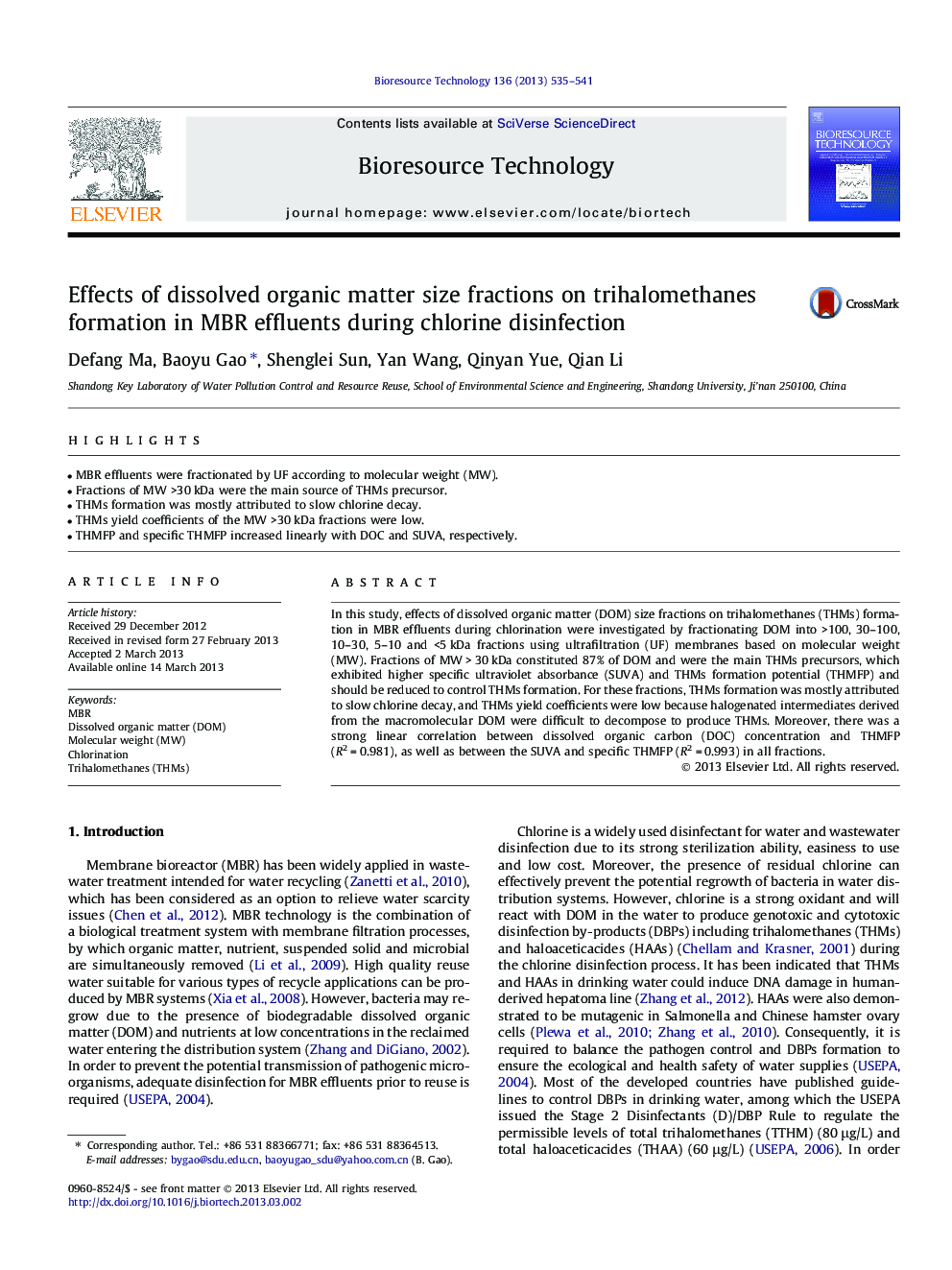| Article ID | Journal | Published Year | Pages | File Type |
|---|---|---|---|---|
| 7082810 | Bioresource Technology | 2013 | 7 Pages |
Abstract
In this study, effects of dissolved organic matter (DOM) size fractions on trihalomethanes (THMs) formation in MBR effluents during chlorination were investigated by fractionating DOM into >100, 30-100, 10-30, 5-10 and <5Â kDa fractions using ultrafiltration (UF) membranes based on molecular weight (MW). Fractions of MWÂ >Â 30Â kDa constituted 87% of DOM and were the main THMs precursors, which exhibited higher specific ultraviolet absorbance (SUVA) and THMs formation potential (THMFP) and should be reduced to control THMs formation. For these fractions, THMs formation was mostly attributed to slow chlorine decay, and THMs yield coefficients were low because halogenated intermediates derived from the macromolecular DOM were difficult to decompose to produce THMs. Moreover, there was a strong linear correlation between dissolved organic carbon (DOC) concentration and THMFP (R2Â =Â 0.981), as well as between the SUVA and specific THMFP (R2Â =Â 0.993) in all fractions.
Related Topics
Physical Sciences and Engineering
Chemical Engineering
Process Chemistry and Technology
Authors
Defang Ma, Baoyu Gao, Shenglei Sun, Yan Wang, Qinyan Yue, Qian Li,
